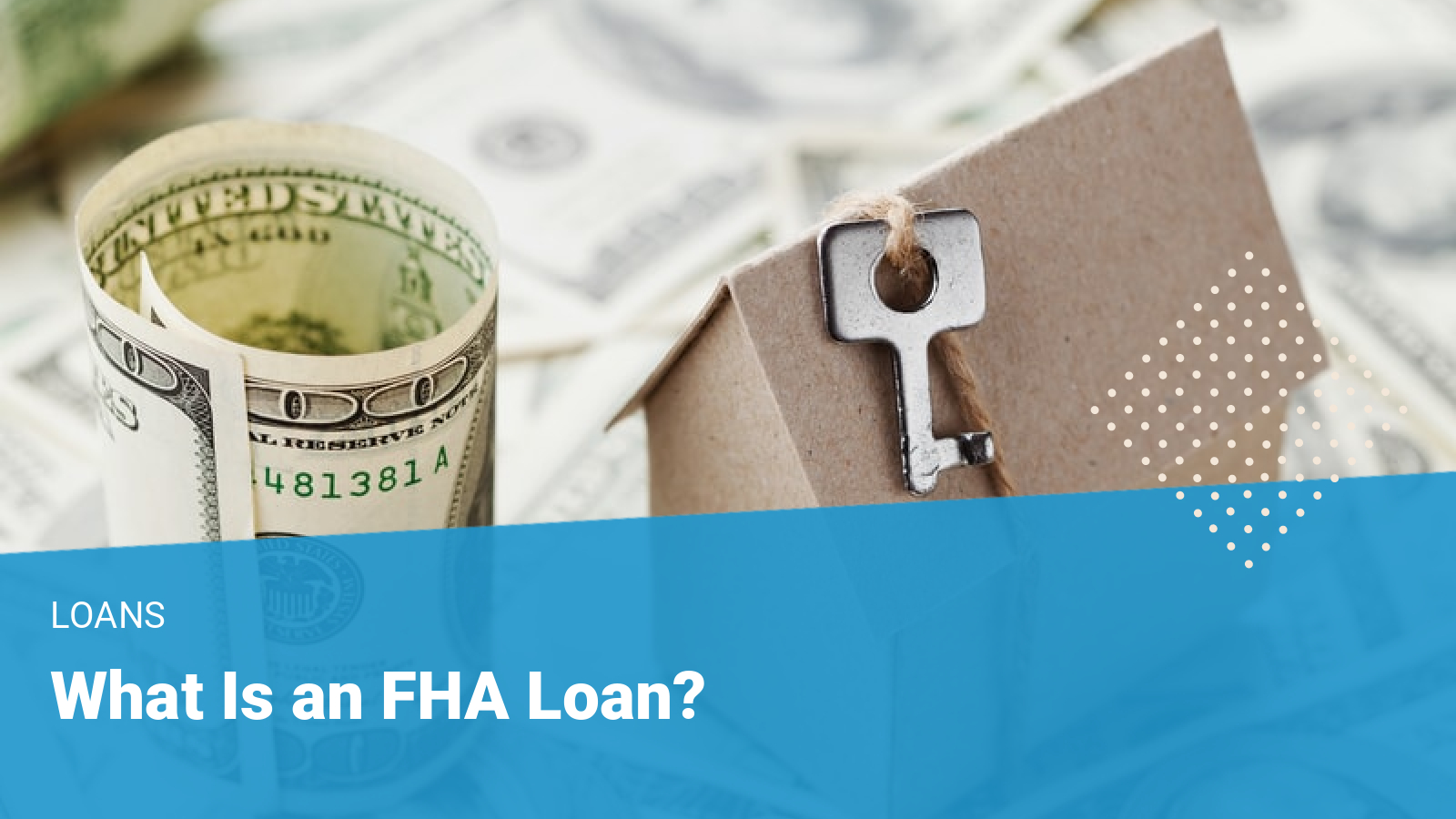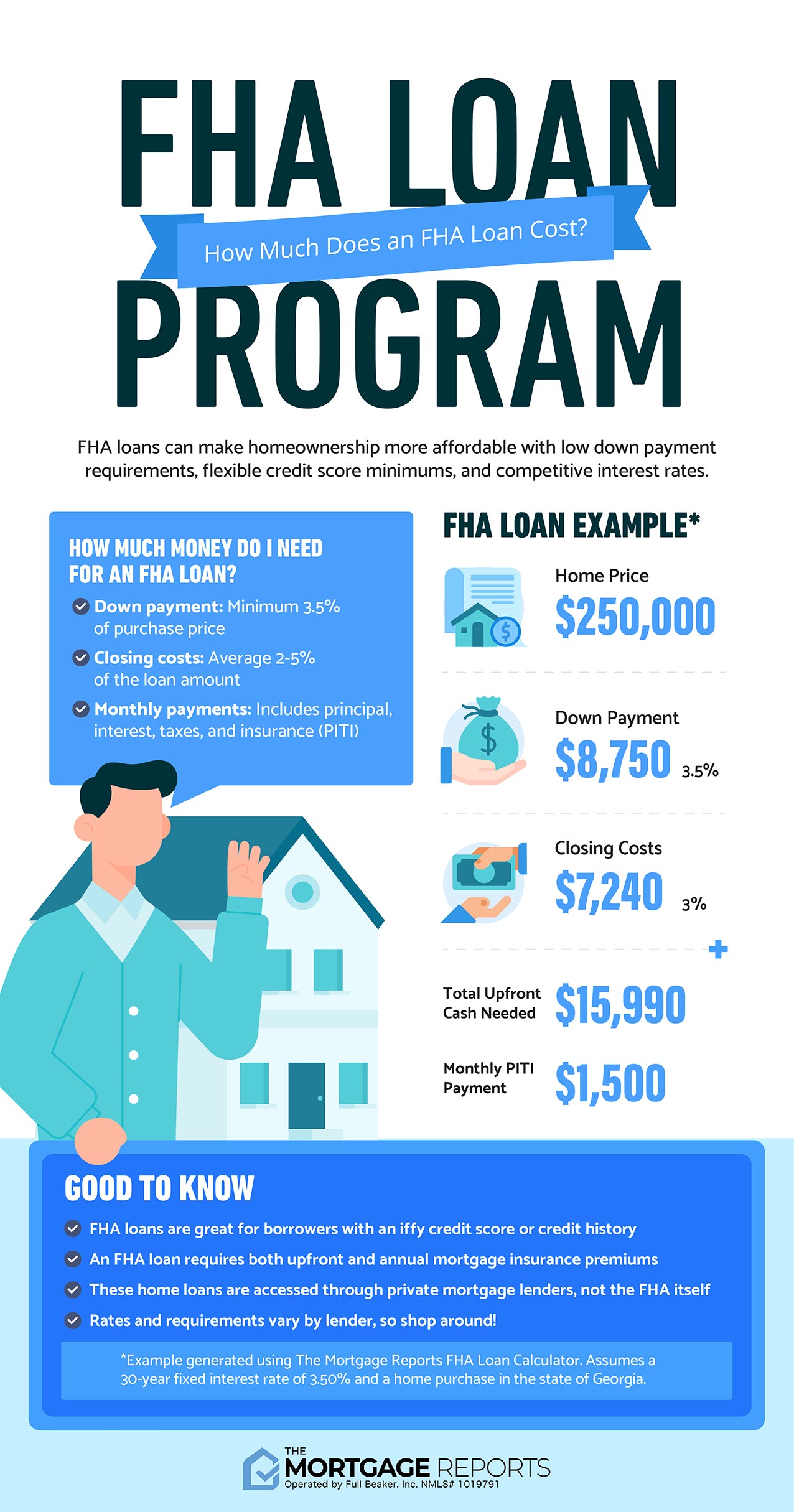What is a Government-Backed Loan and How Does it Work?
A government-backed loan is a type of mortgage that is insured or guaranteed by a government agency, such as the Federal Housing Administration (FHA). These loans are designed to provide affordable financing options for homebuyers who may not qualify for conventional loans. One of the most popular types of government-backed loans is the FHA loan, which is often the go-to option for first-time homebuyers and those with lower credit scores.
So, what is an FHA loan? An FHA loan is a mortgage that is insured by the FHA, which is a division of the U.S. Department of Housing and Urban Development (HUD). The FHA provides mortgage insurance to lenders, which protects them against losses in the event of a borrower default. This insurance allows lenders to offer more favorable terms, such as lower down payment requirements and easier credit qualification.
The benefits of government-backed loans, including FHA loans, are numerous. For example, they often require lower down payments, which can be as low as 3.5% of the purchase price. They also have more lenient credit score requirements, which can make it easier for borrowers to qualify. Additionally, government-backed loans often have lower mortgage insurance premiums, which can save borrowers money on their monthly payments.
Government-backed loans are not just limited to FHA loans. Other types of government-backed loans include VA loans, which are guaranteed by the U.S. Department of Veterans Affairs, and USDA loans, which are guaranteed by the U.S. Department of Agriculture. Each of these loan types has its own unique benefits and requirements, but they all share the common goal of providing affordable financing options for homebuyers.
Overall, government-backed loans are an attractive option for homebuyers who want to purchase a home but may not qualify for conventional financing. By understanding how these loans work and the benefits they offer, homebuyers can make informed decisions about their mortgage options and achieve their goal of homeownership.
How to Qualify for an FHA Loan: A Step-by-Step Guide
Qualifying for an FHA loan can seem like a daunting task, but it’s actually a straightforward process. To qualify for an FHA loan, you’ll need to meet certain credit score requirements, debt-to-income ratio, and employment history. Here’s a step-by-step guide to help you understand the process:
Step 1: Check Your Credit Score
The minimum credit score required for an FHA loan is 580. However, some lenders may have stricter requirements, so it’s essential to check your credit score before applying. You can check your credit score for free on various websites, such as Credit Karma or Credit Sesame.
Step 2: Determine Your Debt-to-Income Ratio
Your debt-to-income ratio is the percentage of your monthly gross income that goes towards paying debts, including credit cards, student loans, and other debts. The FHA requires a debt-to-income ratio of 31% or less. However, some lenders may have stricter requirements, so it’s essential to calculate your debt-to-income ratio before applying.
Step 3: Gather Employment History and Income Documents
You’ll need to provide proof of employment and income to qualify for an FHA loan. This includes pay stubs, W-2 forms, and tax returns. You’ll also need to provide documentation of your employment history, including the length of time you’ve been employed and your job title.
Step 4: Meet the FHA’s Income Requirements
The FHA has income requirements that vary by location. You’ll need to meet the income requirements for the area where you’re purchasing a home. You can check the FHA’s income limits on their website.
Step 5: Choose an FHA-Approved Lender
Not all lenders offer FHA loans, so it’s essential to choose an FHA-approved lender. You can find a list of FHA-approved lenders on the FHA’s website.
Tips to Improve Your Chances of Approval
While the FHA has strict requirements, there are ways to improve your chances of approval. Here are a few tips:
Improve your credit score by paying off debts and making on-time payments.
Reduce your debt-to-income ratio by paying off debts and increasing your income.
Provide complete and accurate documentation to avoid delays in the application process.
Work with an FHA-approved lender who has experience with FHA loans.
By following these steps and tips, you can improve your chances of qualifying for an FHA loan and achieving your goal of homeownership.
Understanding FHA Loan Limits and Mortgage Insurance
FHA loan limits vary by location and are based on the conforming loan limits set by the Federal Housing Finance Agency (FHFA). The loan limits are adjusted annually to reflect changes in the housing market. For 2022, the FHA loan limits range from $331,760 to $765,600, depending on the location.
The FHA loan limits are divided into three categories: low-cost areas, high-cost areas, and special exception areas. Low-cost areas have loan limits that are lower than the national average, while high-cost areas have loan limits that are higher than the national average. Special exception areas have loan limits that are higher than the national average due to unique housing market conditions.
Mortgage insurance is a critical component of FHA loans. The FHA requires borrowers to pay mortgage insurance premiums (MIPs) to protect the lender in case of default. The MIPs are paid monthly and are based on the loan amount and the borrower’s credit score. The MIPs can range from 0.45% to 1.05% of the loan amount, depending on the loan term and the borrower’s credit score.
The purpose of mortgage insurance is to protect the lender in case of default. If the borrower defaults on the loan, the lender can file a claim with the FHA to recover the loss. The FHA then pays the lender the amount of the claim, minus any recoveries from the sale of the property.
The mortgage insurance premiums can be paid in two ways: upfront and monthly. The upfront MIP is paid at closing and is typically 1.75% of the loan amount. The monthly MIP is paid along with the monthly mortgage payment and is typically 0.45% to 1.05% of the loan amount.
While mortgage insurance can increase the borrower’s monthly payment, it provides a critical layer of protection for the lender. This protection allows lenders to offer more favorable loan terms, such as lower down payment requirements and easier credit qualification.
In summary, FHA loan limits vary by location and are based on the conforming loan limits set by the FHFA. Mortgage insurance is a critical component of FHA loans and provides protection for the lender in case of default. The mortgage insurance premiums can be paid upfront and monthly, and the amount of the premiums depends on the loan amount and the borrower’s credit score.
The Benefits of FHA Loans for First-Time Homebuyers
FHA loans are a popular choice for first-time homebuyers due to their lenient credit score requirements, lower down payment options, and lower mortgage insurance premiums. These benefits make it easier for first-time homebuyers to qualify for a mortgage and purchase a home.
One of the main benefits of FHA loans for first-time homebuyers is the lower down payment requirement. With an FHA loan, borrowers can put down as little as 3.5% of the purchase price, which is significantly lower than the 20% down payment required for conventional loans. This lower down payment requirement makes it easier for first-time homebuyers to qualify for a mortgage and purchase a home.
Another benefit of FHA loans for first-time homebuyers is the easier credit qualification. FHA loans have more lenient credit score requirements than conventional loans, which makes it easier for borrowers with lower credit scores to qualify. Additionally, FHA loans allow borrowers to qualify with a higher debt-to-income ratio, which makes it easier for borrowers with higher levels of debt to qualify.
FHA loans also offer lower mortgage insurance premiums for first-time homebuyers. Mortgage insurance premiums are paid by the borrower to protect the lender in case of default. With an FHA loan, borrowers can expect to pay lower mortgage insurance premiums than with a conventional loan, which can save them money on their monthly mortgage payment.
In addition to these benefits, FHA loans also offer more flexible underwriting guidelines, which makes it easier for first-time homebuyers to qualify. FHA loans allow borrowers to qualify with non-traditional credit, such as rent payments and utility bills, which can be beneficial for borrowers who do not have a traditional credit history.
Overall, FHA loans offer many benefits for first-time homebuyers, including lower down payment requirements, easier credit qualification, and lower mortgage insurance premiums. These benefits make it easier for first-time homebuyers to qualify for a mortgage and purchase a home, which can be a great option for those who are looking to purchase their first home.
It’s worth noting that FHA loans are not just limited to first-time homebuyers. They can be used by anyone who meets the eligibility requirements, including repeat homebuyers and investors. However, the benefits of FHA loans are particularly beneficial for first-time homebuyers who may not have a lot of equity or a high credit score.
How to Choose the Right FHA Loan for Your Needs
When it comes to choosing an FHA loan, there are several options to consider. The right loan for you will depend on your financial situation, goals, and preferences. In this article, we’ll explore the different types of FHA loans available and provide guidance on how to choose the right one for your needs.
Fixed-Rate FHA Loans
A fixed-rate FHA loan is a popular choice for borrowers who want a stable monthly payment. With a fixed-rate loan, the interest rate remains the same for the entire term of the loan, which can range from 10 to 30 years. This type of loan is ideal for borrowers who plan to stay in their home for a long time and want to avoid the risk of rising interest rates.
Adjustable-Rate FHA Loans
An adjustable-rate FHA loan, also known as an ARM, has an interest rate that can change over time. The interest rate is typically lower than a fixed-rate loan, but it can increase or decrease based on market conditions. This type of loan is ideal for borrowers who expect their income to increase in the future or who plan to sell their home before the interest rate adjusts.
FHA Streamline Loans
An FHA streamline loan is a refinancing option for borrowers who already have an FHA loan. This type of loan allows borrowers to refinance their existing loan with a new loan that has a lower interest rate and lower monthly payments. The streamline loan process is faster and easier than a traditional refinance, and it requires less documentation.
FHA 203(k) Loans
An FHA 203(k) loan is a rehabilitation loan that allows borrowers to finance the purchase of a home and the cost of repairs and renovations in a single loan. This type of loan is ideal for borrowers who want to purchase a fixer-upper or a home that needs significant repairs.
How to Choose the Right FHA Loan
When choosing an FHA loan, consider the following factors:
Interest rate: Compare the interest rates offered by different lenders and choose the one that is lowest.
Loan term: Consider the length of the loan term and choose one that fits your financial goals.
Monthly payments: Calculate your monthly payments and choose a loan that fits your budget.
Closing costs: Compare the closing costs offered by different lenders and choose one that is lowest.
By considering these factors and choosing the right FHA loan for your needs, you can achieve your goal of homeownership and enjoy the benefits of an FHA loan.
FHA Loan vs. Conventional Loan: Which is Right for You?
When it comes to choosing a mortgage, borrowers have several options to consider. Two of the most popular types of mortgages are FHA loans and conventional loans. While both types of loans have their advantages and disadvantages, they cater to different types of borrowers and financial situations.
FHA Loans
FHA loans are government-backed mortgages that are insured by the Federal Housing Administration (FHA). They are popular among first-time homebuyers and borrowers with lower credit scores. FHA loans offer several benefits, including lower down payment requirements, easier credit qualification, and lower mortgage insurance premiums.
Conventional Loans
Conventional loans, on the other hand, are not insured by the government. They are offered by private lenders and are typically more stringent in their requirements. Conventional loans require a higher down payment, typically 20% of the purchase price, and have stricter credit score requirements. However, they often offer better interest rates and lower mortgage insurance premiums.
Key Differences Between FHA and Conventional Loans
Here are some key differences between FHA and conventional loans:
Down Payment Requirements: FHA loans require a down payment as low as 3.5%, while conventional loans require a down payment of at least 20%.
Credit Score Requirements: FHA loans have more lenient credit score requirements, with a minimum credit score of 580. Conventional loans require a minimum credit score of 620.
Mortgage Insurance Premiums: FHA loans require mortgage insurance premiums, which can range from 0.45% to 1.05% of the loan amount. Conventional loans do not require mortgage insurance premiums if the borrower puts down 20% or more.
Interest Rates: Conventional loans often offer better interest rates than FHA loans, especially for borrowers with higher credit scores.
Which Type of Loan is Right for You?
The type of loan that is right for you depends on your financial situation, credit score, and goals. If you are a first-time homebuyer or have a lower credit score, an FHA loan may be a better option. However, if you have a higher credit score and can afford a higher down payment, a conventional loan may offer better interest rates and lower mortgage insurance premiums.
Ultimately, the decision between an FHA loan and a conventional loan depends on your individual circumstances. It’s essential to weigh the pros and cons of each type of loan and consider your financial goals before making a decision.
Common Mistakes to Avoid When Applying for an FHA Loan
When applying for an FHA loan, it’s essential to avoid common mistakes that can delay or even deny your application. Here are some common mistakes to avoid:
Not Checking Your Credit Report
Before applying for an FHA loan, it’s crucial to check your credit report for any errors or inaccuracies. A low credit score can affect your chances of approval, so it’s essential to ensure that your credit report is accurate and up-to-date.
Not Providing Complete Documentation
FHA lenders require a significant amount of documentation to process your loan application. Make sure to provide all the necessary documents, including pay stubs, bank statements, and tax returns. Incomplete documentation can delay or even deny your application.
Not Meeting the Debt-to-Income Ratio
FHA lenders have strict debt-to-income ratio requirements. Make sure to calculate your debt-to-income ratio accurately and ensure that it meets the FHA’s requirements. A high debt-to-income ratio can affect your chances of approval.
Not Choosing the Right FHA Loan Program
FHA offers several loan programs, including fixed-rate and adjustable-rate loans. Make sure to choose the right loan program for your financial situation and goals. Choosing the wrong loan program can affect your monthly payments and overall cost of the loan.
Not Working with an FHA-Approved Lender
Not all lenders are FHA-approved. Make sure to work with an FHA-approved lender to ensure that your loan application is processed correctly. Working with an unapproved lender can delay or even deny your application.
Tips to Avoid These Mistakes
Here are some tips to avoid these common mistakes:
Check your credit report regularly to ensure that it’s accurate and up-to-date.
Provide complete and accurate documentation to avoid delays in the application process.
Calculate your debt-to-income ratio accurately and ensure that it meets the FHA’s requirements.
Choose the right FHA loan program for your financial situation and goals.
Work with an FHA-approved lender to ensure that your loan application is processed correctly.
By avoiding these common mistakes, you can increase your chances of approval and ensure a smooth loan application process.
Next Steps: What to Expect After Your FHA Loan is Approved
After your FHA loan is approved, there are several next steps to expect in the process. Here’s a comprehensive guide to help you understand what to expect:
Closing Process
The closing process typically takes place 30-60 days after your loan is approved. During this time, your lender will finalize the loan documents, and you’ll sign the final paperwork. The closing process usually takes place at a title company or attorney’s office.
What to Expect at the Closing Table
At the closing table, you’ll sign the final loan documents, transfer the ownership of the property, and complete the transaction. Here’s what to expect:
Review and Sign the Final Loan Documents
Review the final loan documents carefully, and ask questions if you’re unsure about anything. Sign the documents, and ensure that you understand the terms and conditions of the loan.
Transfer the Ownership of the Property
The seller will transfer the ownership of the property to you, and you’ll receive the keys to your new home.
Complete the Transaction
Once the documents are signed, and the ownership is transferred, the transaction is complete. You’ll receive a copy of the final loan documents, and your lender will disburse the funds.
Post-Closing Process
After the closing process is complete, there are several post-closing steps to expect:
Update Your Records
Update your records to reflect the new ownership of the property. This includes updating your address, and notifying your employer, bank, and other relevant parties.
Make Your First Mortgage Payment
Make your first mortgage payment on time, and ensure that you understand the payment terms and conditions.
Monitor Your Credit Report
Monitor your credit report to ensure that the loan is reported correctly, and that there are no errors or inaccuracies.
By understanding the next steps in the process after your FHA loan is approved, you can ensure a smooth and successful transaction.







